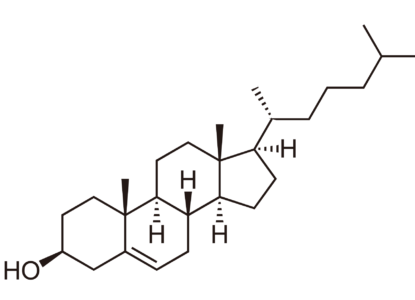Why the Low Carb Community’s TG/HDL Ratio Obsession is Misguided
Article at a Glance
- TG/HDL ratio has been focused on for many years as a biomarker for insulin sensitivity in European populations.
- According to Dr. Tom Dayspring, the TG/HDL ratio has no application to the Black Community due to the rarity of elevated TG.
- APOB is much more important as a measure of heart health and disease risk, than TG/HDL.

Contents
Two of the most beloved biomarkers in low carbohydrate groups are HDL-C and Triglycerides (TG).
Why?
Because the ratio of TG / HDL-C is a reliable predictor of insulin resistance in Caucasian populations,1 and the low carb world has zeroed in on small dense LDL and sugar as the cause of heart disease (to calculate this ratio yourself, simply take your TGs and divide by your HDL-C).
Many low carb groups will tell you to ignore biomarkers like LDL-C and total cholesterol so long as your TG/HDL ratio is in good shape, which is usually defined as close to 1. The party line here is that larger, fluffier LDL isn’t dangerous. Unfortunately, this statement ignores the best evidence.
Although we have nothing against low carb groups, and while it is true that the TG/HDL ratio can be predictive of insulin resistance and the cardiovascular biomarkers that go along with it in some populations, this is bad advice. Many people following low carbohydrate, high fat diets, often called “lean mass hyper responders,” see low TG and high HDL, but are still at increased risk for heart disease because of elevated LDL-C and more importantly, APOB.
The people we’re talking about here are those with familial hypercholesterolemia. High LDL runs in the family. They have “large fluffy” particles and are at an increased risk for heart disease when eating a high fat diet, because their bodies either make a ton more, or absorb a ton more, cholesterol. The end result can be a great TG/HDL ratio, but also a terrible APOB number because of a multitude of cholesterol rich LDL. This is a person with more of a chance to have a heart attack or stroke. Of course, this doesn’t mean they are dropping dead tomorrow, just that they have added some statistical risk to the equation.
Of course, there are people who have increased risk due to really high triglycerides. Maybe directionally, higher fat and lower carb is healthy for these types. Unlike the high cholesterol people, this is the type of person who can have LDL-C roughly in range, but poor APOB due to triglyceride rich particles like VLDL and sdLDL.
In this blog post, my goal is to help explain when your TG/HDL ratio, standing alone, will not save you from heart disease, and further, why you should pay attention to markers like APOB if you want to keep your heart as healthy as possible for as long as possible.
Spoiler alert: your TG/HDL isn’t protective unless your APOB is in range.
What is HDL-C?
Most of the cholesterol in the body is made by the body. To keep levels in balance, we need a mechanism for getting rid of some of that cholesterol, and this is where HDL comes in.
- HDL is often called “good cholesterol” because of the role these macromolecules play in transporting cholesterol to the liver where the body can “get rid of it” through the gallbladder, bile acids, and ultimately stool.
- HDL can bring cholesterol back to the liver, or it can “hand off” cholesterol to an LDL particle through cholesteryl ester transfer protein (“CETP”).
- Unfortunately, drug trials that have targeted HDL, both by increasing serum levels and by stopping HDL from passing off cholesterol to LDL particles through CETP, have failed to reduce the incidence of heart disease and stroke. 2 3
- These data have some top cardiologists asking whether HDL-C is even a metric worth measuring any longer.
Back to the low carb arguments. If you are someone playing along at home and banking on a TG/HDL ratio of one to keep your heart in good shape, doesn’t it give you pause that many top doctors are growing increasingly unsure of why HDL is important at all? We can have our arguments about design of trials and all cause mortality, but LDL-C when targeted cuts the risk of heart attack and stroke and there are a lot of studies that back that up. They went for the same studies for HDL, but didn’t find the efficacy. That should make everyone, no matter how much butter goes in their morning coffee, take a second look.
What are Triglycerides?
Triglycerides are fatty acids the body uses for energy.
TG fuel our muscles but when we take in more calories than the body can use, they are stored as fat. The body can convert an excess of carbohydrate and sugar into triglycerides by a process called de novo lipogenesis. High TGs, usually defined as > 150 mg/DL, is a sign of insulin resistance in Caucasians.
TG/HDL ratio in the Black Community
Much of the conversation surrounding the health benefits of TG/HDL ratio centers on studies, like the Framingham study, which focused overwhelmingly on Caucasian populations.
The TG/HDL means very little for African Americans because African Americans generally have lower levels of triglycerides, and unlike White populations, this holds true even in the presence of insulin resistance.
See also: MTHFR Health Impact and the Black Community
Insulin resistance and heart disease
Insulin resistance, irrespective of whether TGs are elevated, increases the risk for heart disease.
In Caucasian populations, elevated triglycerides are one of the tell tale signs of insulin resistance.
Reliable studies have identified this pattern, however, the studies don’t have the broad application some claim because they fail to account for underrepresented groups and people of color.
The triglyceride paradox in the Black community
As I mentioned above, in populations of African descent, elevated TGs aren’t present even when insulin resistance is. What we see instead is normal triglycerides and low HDL-C. As such, low HDL-C can be one sign of insulin resistance in African Americans, and the usual diagnostic tests used to identify insulin resistance may leave cases of metabolic problems hidden in these communities.
For more, see the excellent write up in the Journal of Metabolic Syndrome and Related Disorders titled The Triglyceride Paradox in People of African Descent.
APOB is a better predictor of risk than TG/HDL ratio
Ok, with a few more building block factual sections tucked away, now we come full circle.
John had the honor of interviewing nationally recognized lipid expert Dr. Tom Dayspring for the Gene Food Podcast recently.
When John asked Dr. Dayspring about the TG/HDL ratio, he acknowledged the metric can be a sign of insulin resistance in White populations, but emphasized it has next to no application in people of African descent. Dr. Dayspring believes hypertension and blood glucose are better predictors of insulin resistance in the Black community than are TG.
Dr. Dayspring went on to say that TG/HDL ratio means very little independent of APOB in all populations and that we are better off using APOB as our canonical risk assessment tool for heart disease risk.
As we touched on in previous blogs, apolipoprotein B or “APOB” for short, is the protein that provides the structure for lipid carrying lipoproteins like LDL and VLDL. Because there is one APOB protein on every LDL, VLDL, and IDL particle, measuring APOB helps physicians understand the total number of dangerous lipoproteins that have the potential to damage the artery wall and start the cascade of heart disease that slowly follows thereafter.
The work of Alan Sniderman, corroborates Dr. Dayspring. Quoting from Dr. Sniderman’s paper in the American Heart Association Journal, Circulation Research:
Multiple discordance analyses have shown that when non–HDL-C was high but apoB was normal, cardiovascular risk was not high, whereas when non–HDL-C was normal but apoB was high, cardiovascular risk was high. ApoB, therefore, is superior to non–HDL-C as a marker of cardiovascular risk
In short, TG/HDL ratio is not protective when APOB is elevated, and the ratio has next to no meaning for the Black community. Your TG/HDL ratio, standing alone, will not protect you from heart disease.




Thank you for this informative article. Does apoB measure LDL particle sizes? Your article did not cite and I could not find a clinical study that established that large LDL (which you listed as LDL, VLDL, and IDL) as opposed to small dense LDL particles, were directly involved in plaque formation in the coronary arteries as your article seems to suggest. I have read papers that suggest that among LDL particles in the blood, only oxidized or glycated, small dense LDL particles are clinically implicated in the development of the disease. If that is the case, then does that not confound the conclusion that high levels of LDL — in general — as evidenced in apoB are “dangerous lipoproteins”? And, if large particle LDLs are not “dangerous” as being implicated in plaque formation, then absent definitive evidence of excessive small dense LDL particles necessary before prescribing intervention? Thanks.
Some lipidologists would probably agree that sdLDL is, on a particle for particle basis, more atherogenic than a larger LDL particle, however, both can crash an artery wall which starts the cascade of inflammation that leads to heart disease. This is a good resource if you’re truly interested in learning more: https://academic.oup.com/eurheartj/article/41/24/2313/5735221
so what’s the “in range” for ApoB… i didn’t see it in your article. thanks !
Max, according to Boston Heart Diagnostics, these are the ranges for ApoB:
Optimal: <80 mg/dL
Borderline: 80–120 mg/dL
Increased Risk: >120 mg/dL